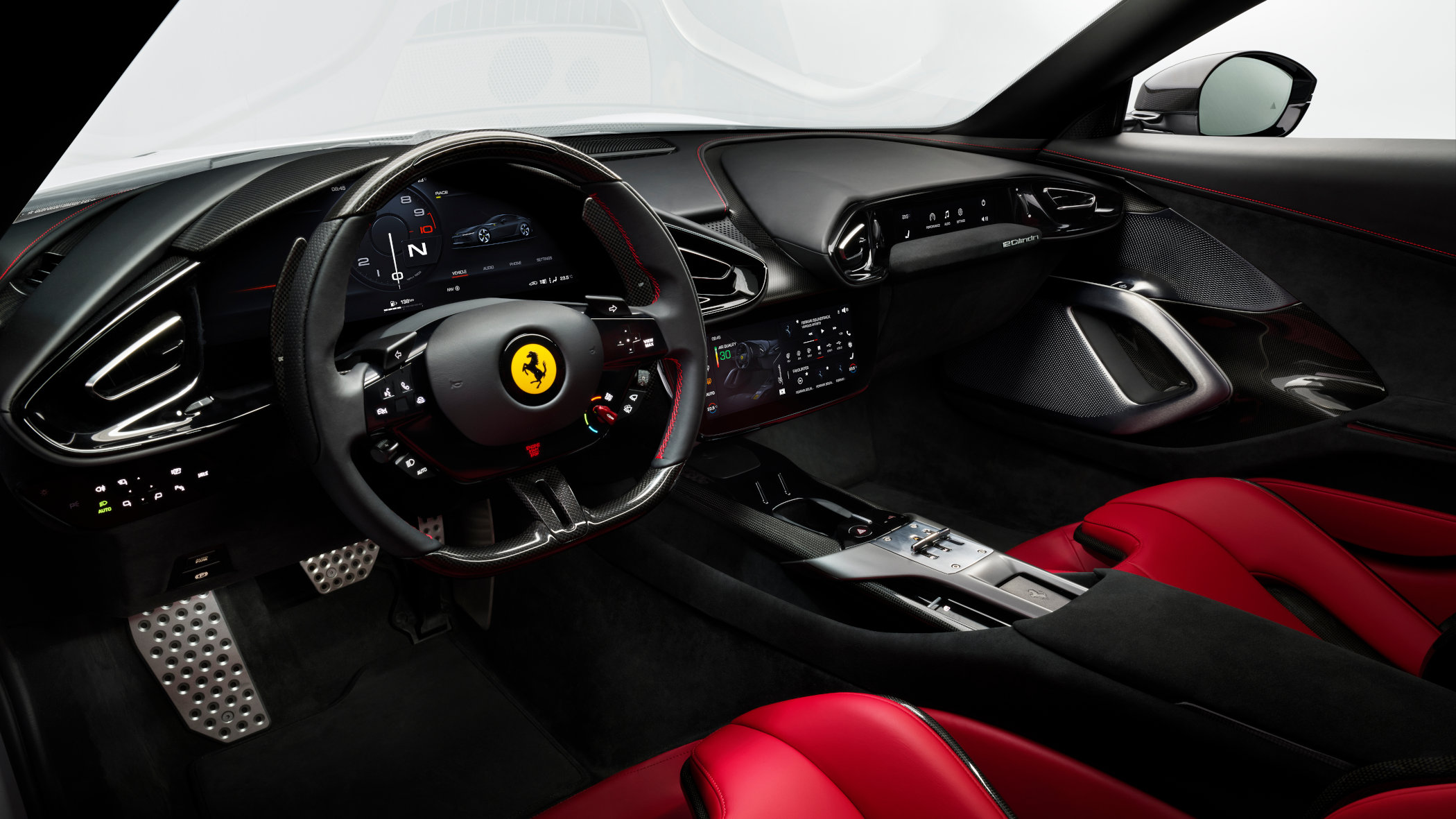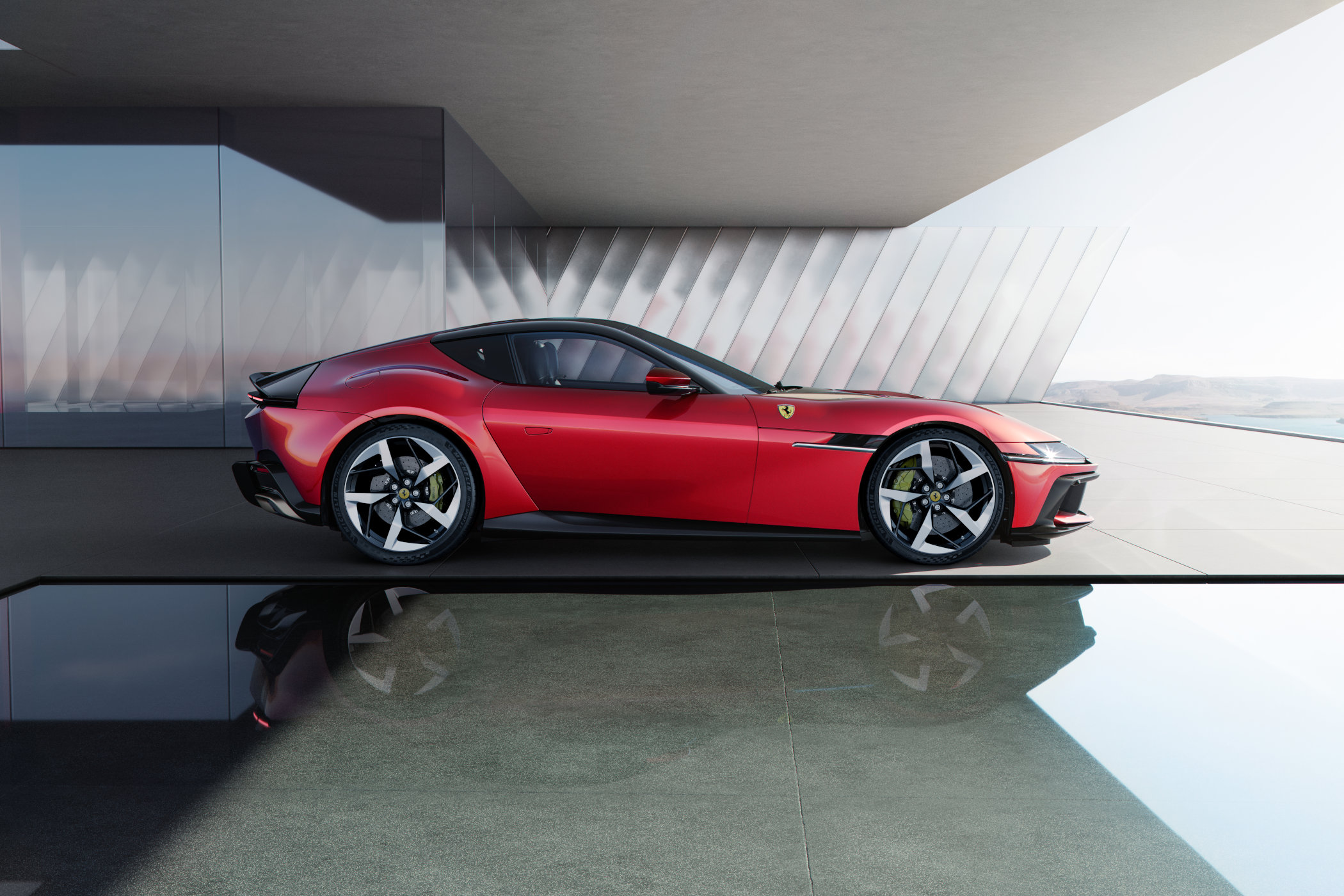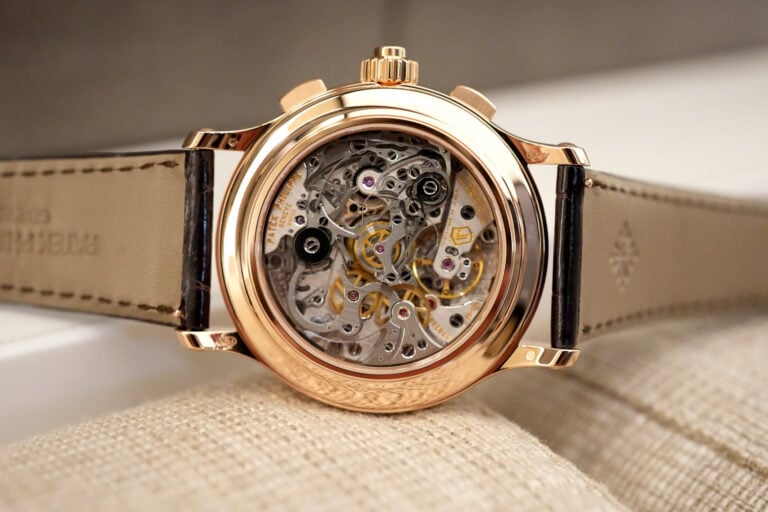The 12Cilindri, or Dodici Cilindri, is Ferrari’s Latest Hoorah to the Mighty V12
In a world where purebread V12s are becoming a rare commodity, Ferrari keeps it alive in its latest masterpiece.

Please, repeat after me: ‘Ferrari Dodici Cilindri, Ferrari Dodici Cilindri’. Although it might be a fair bit easier to simply call it the V12, Ferrari wants you to call its latest masterpiece the 12Cilindri, or Dodici Cilindri, which is the Italian way of saying V12. A perfect example of why Italians are so, well, Italian. It sounds glorious, elegant, romantic even, and perfectly in line with the past. The name Testarossa immediately comes to mind, which literally translates to Redhead, derived from the red cylinder heads of the engine. And I can very much get behind Ferrari’s way of naming this car, especially when the Dodici Cilindri moniker refers to something as pretty as the manufacturer’s latest supercar-like Grand Tourer.
Grand Tourer
The Grand Tourer, or GT, holds a special place in the Ferrari catalogue. While all the hardcore mid-engined machines, such as the SF90 or LaFerrari, are all fine and dandy and perhaps the pinnacle of performance, the front-engine V12 Grand Tourer has always played a significant role in the history of the Prancing Horse. After all, they built them as early as 1949, when the 166 Inter was put on the road. And there have been quite a few, with exemplary cars like the 365 GTB/4 Daytona, 550 Maranello and (perhaps the prettiest of them all) the 250 GT Berlinetta SWB.
The recipe is quite simple. A Grand Tourer typically has a long bonnet, two doors, a two-seater (or 2+2) layout, and a potent engine in the front that sends its power to the rear wheels. Throughout history, there have been many amazing examples, such as the Mercedes-Benz 300 SLR Gullwing, the Jaguar E-Type, the Aston Martin DB5, the Alfa Romeo 8C and so on. While it was originally used to describe a car built for high-speed and long-distance driving, the term is also used as a performance indicator. Think of the wild Abt XGT we featured recently, which says ‘GT’ on the badge but is nothing like what a classic GT is all about.
Anyway, the Dodici Cilindri continues the legacy of Ferrari’s super-GTs and it must be said that it looks spectacular. There are a few odd design elements here or there that might raise a few eyebrows, but after taking it all in, the general consensus seems to be: what a beauty! Let’s get into some of the details.
Purebread v12 GT
Shaped like a true Grand Tourer, the Dodici Cilindri has a long bonnet, or ‘cofango’ in Italian. The nose has a hint of the Ferrari 365 GTB/4 Daytona, one of Ferrari’s all-time greats. The sharp lines up front, the black section between the headlights and the nose swooping up over the front wheels and into the side profile and cockpit are pure ‘Daytona’. Sure, modern requirements dictate a big splitter, air intakes and exhausts, and plenty of aero elements to help guide the air in, out and around the car, but the Daytona soul is there! Oh, and speaking of that black strip up front, it will always be black, regardless of the body colour.
Stepping to the back half of the car, the dramatic design continues. A ‘Delta Wing’ section separates the glass front half of the cabin from the rear window, which ends in a little duck-tail lip. The black elements on the left and right corners are actually bits of active aero, opening up to 10 degrees to push the rear end down at speeds. Around the back, Ferrari breaks with its long-standing tradition of round tail lights and exhausts in favour of more modern shapes and lines. The wheels are forged from a single block of aluminium and have a diameter of 21 inches all around. Not everything is brand new, though, as the brakes and suspension components are borrowed from the 812 Superfast.
Ferrari also introduces the Dodici Cilindri Spider, with a retractable hard-top roof to enjoy the elements of nature at the push of a button. This does in with the Delta Wing roof lines and turns the rear section into a double-bulge clamshell instead. Opening up the doors on either of the two allows you access to the carbon fibre and leather-clad interior. There’s only room for two inside the Dodici Cilindri, but the driver and passenger have plenty of entertainment at their disposal. Your ride-along has its own instrument screen at his or her disposal, indicating speeds, rev counts, etcetera. All the creature comforts you expect are there, too: air-conditioning, Bluetooth connectivity, a high-performance audio system, the Manettino switch on the steering wheel to go from mild to wild, and so on.
But all this means nothing without a bit of power, and Ferrari hasn’t overlooked that area. As its name blatantly indicates, there’s a V12 engine hidden underneath that pretty exterior. The 6,5 litre V12 lacks turbos or electric power, yet pumps out a mighty 820bhp and has a redline of 9,500rpm. Paired with a dry weight of 1,560kgs for the Coupe and 1,620kgs for the Spider, it can hit 100kph (or 62mph) in under 3 seconds and 200kph in under 8.3 seconds. The top speed is claimed to be over 340kph, thanks to an 8-speed automatic dual-clutch transmission.
Last of its kind
It’s very likely the Dodici Cilindri is the last of its kind. The sad reality is that with ever-stringent emission and noise regulations and the seemingly never-ending push for electrification, the glorious, unassisted, pure V12 will be a thing of the past soon. Aston Martin, Lamborghini and others have all stated that the curtain is dropping on the non-hybrid V12 poster car and announced that future models will be electrified one way or another if they decide to build another V12 in the first place. Heck, even Lamborghini has succumbed to the pressure and made the replacement for the Aventador, the Revuelto, a hybrid!
Nevertheless, we can bask in the glory of a normally aspirated V12 once more, thanks to the Ferrari and its Dodici Cilindri. And unlike the manufacturer’s past Grand Tourers, there are options too, as Ferrari presents a Spider version alongside the Coupé. Normally there’s a bit of time before Ferrari introduces a drop-top model. This does come at a price, though. Where the Dodici Cilindri starts at an already eye-watering price of EUR 395,000, chopping off the roof will bump that price to EUR 435,000. And that’s before you’ve had your fun with the options list!
To all the people who will be fortunate enough to spec, buy and own one, I salute you, but please, please, please drive it! Drive it whenever and wherever you can, so car enthusiasts the world over can enjoy what is perhaps the swansong of Ferrari’s mighty free-breathing, non-electric V12 ‘motore‘.
For more information, please visit Ferrari.com.
Editorial Note: The images used for this article are sourced by and used with permission of Ferrari S.p.A.

















3 responses
Incorrect. This is absolutely not the last hoorah for V12s, very likely not the last hurrah for Ferrari’s last naturally aspirated V12, and probably not even the last non-hybridised Ferrari V12.
It’s not just how electrification solves nothing, and its impossibility will soon be impossible to cover up anymore. It’s not how electrification would cost society so many trillions that even if they would be genuinely environmentally friendly (which they are not) the effect of that crippling cost would negate and far outweigh any benefits. The totalitarian dictatorships ruling today’s Europe and the US are not quite powerful enough to manage to push this lunacy through at its horrendous costs and to block all the great fuels for internal combustion engines.
There’s nothing wrong with internal combustion engines, and people want them. Ffe München (funded overwhelmingly by EV-industry and electric power industry) has published a study proving that ICEs are cleaner than EVs already when using fossil natural gas. Now imagine how much cleaner they are with even cleaner fuels than fossil natural gas!
Well, actually we don’t even have to imagine: we KNOW that NEXBTL biodiesel has been proven to be far cleaner than EVs. NEXBTL reduces emissions compared to fossil diesel by 70-90% which means it’s massively cleaner than what EVs will ever be able to get to. Then there’s bioethanol, biomethane which are both in use today. Biomethane is theoretically NEGATIVE in emissions as it reduces stronger emissions types from occurring while emitting less harmful ones.
And e-fuels are better than EVs too: we know they’re going to cost less than the trillions EVs cost already in the short term, and in the long term their mass-production with renewables (thus not needing the massively expensive and often not doable electricity transmission lines) and new-gen nuclear power plants will be massively cheaper than EVs.
Signed: A scientist who has designed EV charging systems and who knows people high up in the EV industry, as well as the politicians colluding with them…and the Chinese
Good lord it’s beautiful. Not perfect, definitely – a lack of round taillights is saddening – but the nod to the 365 Daytona on the front-end is just magnificent.
Now…what watch to wear when driving the Spider to Portofino…?
@TMe : to be fair, the article’s title says “latest hurrah”, and as most ferraristi know, people have been saying the F12 is the last one, no wait it’s the GTC4, wait what it’s the…
Eh!
Now to read the rest of your post! 🙂